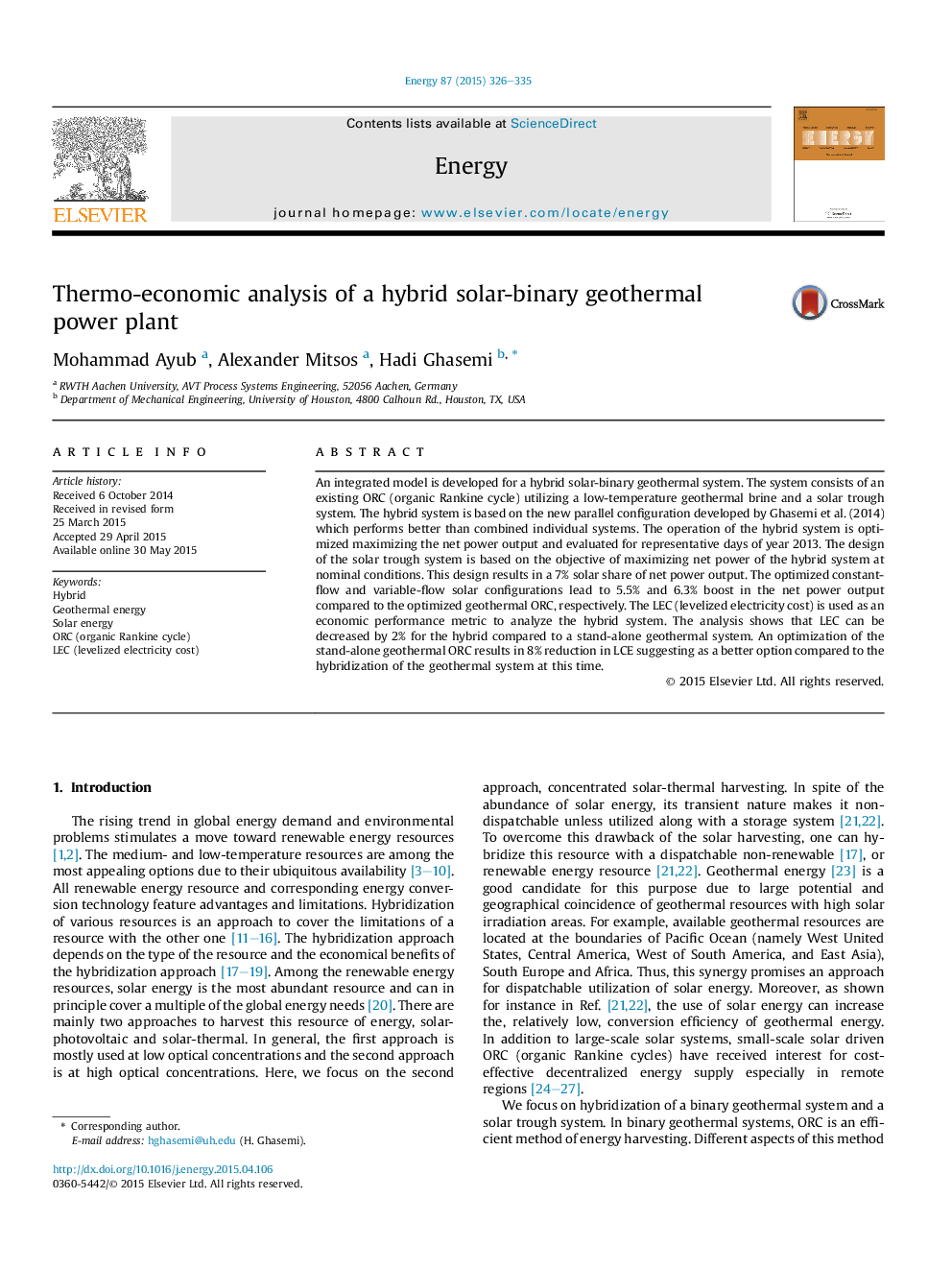| Article ID | Journal | Published Year | Pages | File Type |
|---|---|---|---|---|
| 1731841 | Energy | 2015 | 10 Pages |
•Developed an integrated model of a geothermal-hybrid power system.•Determined optimal operation strategy of the hybrid system.•Conducted an economic analysis including capital, maintenance and operation costs.•Hybrid system leads to 2% drop in LEC compared to the standalone geothermal system.•Optimized operation of the standalone geothermal system leads to 8% decrease in LEC.
An integrated model is developed for a hybrid solar-binary geothermal system. The system consists of an existing ORC (organic Rankine cycle) utilizing a low-temperature geothermal brine and a solar trough system. The hybrid system is based on the new parallel configuration developed by Ghasemi et al. (2014) which performs better than combined individual systems. The operation of the hybrid system is optimized maximizing the net power output and evaluated for representative days of year 2013. The design of the solar trough system is based on the objective of maximizing net power of the hybrid system at nominal conditions. This design results in a 7% solar share of net power output. The optimized constant-flow and variable-flow solar configurations lead to 5.5% and 6.3% boost in the net power output compared to the optimized geothermal ORC, respectively. The LEC (levelized electricity cost) is used as an economic performance metric to analyze the hybrid system. The analysis shows that LEC can be decreased by 2% for the hybrid compared to a stand-alone geothermal system. An optimization of the stand-alone geothermal ORC results in 8% reduction in LCE suggesting as a better option compared to the hybridization of the geothermal system at this time.
